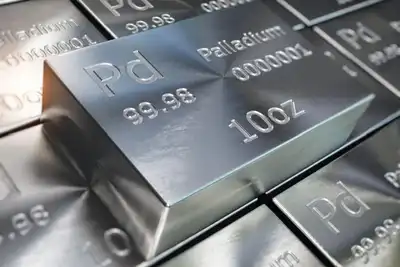The allure of owning precious metals, including platinum, is something many investors and collectors find appealing, as it offers a tangible and secure feeling compared to holding securities linked to the metal.
Having physical possession of platinum, such as platinum coins or bars, provides an added sense of security that goes beyond merely speculating on the platinum market or owning shares in platinum-based funds. Owning physical platinum gives individuals a direct connection to their investment, enhancing the perceived security and control over their wealth.
In addition to its value as an investment, platinum is admired for its beauty, and the craftsmanship of platinum coins and bars adds to their aesthetic appeal. Proud owners often showcase their platinum collections, sharing the joy of ownership with loved ones, a tangible experience that cannot be replicated with securities.
Despite the modern efficiency of financial markets and the availability of platinum exchange-traded funds (ETFs), which offer a way to gain exposure to platinum without holding physical metal, many still prefer owning the actual physical platinum. They find greater satisfaction in owning the real thing, even if it means incurring higher costs compared to holding platinum in ETFs.

This preference for physical ownership reflects the enduring charm of owning precious metals in a world where digital and intangible assets dominate the financial landscape. The intrinsic value and personal connection associated with physical platinum continue to resonate with investors and collectors, making platinum coins and bars a popular choice for those seeking a tangible and timeless investment experience.
The Platinum Buying and Selling Process
When purchasing platinum bars and coins, the process involves more than just electronic transactions as with securities. Since physical platinum is involved, the buyer must either pick up the platinum at the dealer’s location or have it shipped to them.
In contrast, securities transactions, such as buying shares of a platinum exchange-traded fund (ETF), occur instantly and electronically. When buying ETF shares, ownership begins immediately after the order is filled, and selling the shares is equally quick.
However, when purchasing physical platinum, the process is more time-consuming. Once the order is filled, the actual platinum must be allocated to the buyer from the dealer’s bulk supply. Then, the platinum needs to be picked up or shipped to the buyer, which introduces further delays.
On the sell side, sellers may not want to ship off their platinum without knowing the price they will receive. To address this, dealers offer a price to sellers before the platinum is shipped, allowing for more convenient trading.
While this process may not be an issue for long-term holders of platinum, those looking for short-term speculation may find it less suitable. The time it takes to complete the transaction may not align with their trading objectives, making it more appropriate for investors planning to hold the platinum for several years.
Many investors choose to hold physical bars and coins for extended periods and value the tangible possession of the platinum. They may prefer this approach over holding it in a pool or speculating on it through securities trading. However, it’s essential to consider the added costs of physical ownership and ensure they provide sufficient value to the platinum investment strategy.
Ultimately, the decision to invest in physical platinum or ETFs depends on an individual’s investment goals, time horizon, and preference for tangible possession versus digital ownership. Each approach has its advantages and considerations that investors should carefully weigh before making a decision.
The Costs of Buying and Holding Platinum Bars and Coins
If an investor is considering long-term ownership of platinum, the inconvenience of shipping the investment to and from dealers may not be a significant concern. However, one crucial factor that will impact all physical platinum investments is the large spread associated with precious metals.
The spread refers to the difference between the buying and selling prices of platinum. Even if an investor plans to hold the position for an extended period, the spread remains relevant. This is a point that often eludes many investors, as they might believe that the spread only matters during trades or may not see it as meaningful at all.
To illustrate the impact of spreads, let’s compare different markets. Buying physical platinum bars and coins may involve a spread of over $100, meaning an ounce of platinum could cost $100 more than its trading value through other means. On the other hand, trading securities based on platinum might have a spread as low as $1 per ounce.
With a large spread of over $100 for physical platinum, the price of platinum must rise by at least the amount of the spread before an investor can break even. Even if the price goes up by $200, selling at that point would still yield less than a $100 profit due to the spread and associated costs.
This is an ongoing issue, even for long-term holders of physical platinum, as the spread will persist for each transaction. Dealers set these spreads to ensure their businesses remain profitable, and while competition keeps them in line with the market, they still represent the true costs of owning platinum bars and coins.
Unfortunately, many investors who buy physical platinum fail to properly account for these costs. Some may purchase it purely for speculation, unaware that there are more cost-effective ways to do so.
However, if the tangible possession of platinum is perceived to have enough value to offset the additional costs of over $100 per ounce, then owning physical platinum bars and coins can be justified. Platinum is available in various increments, starting from a quarter ounce, in the form of bars or coins, providing flexibility to investors.




